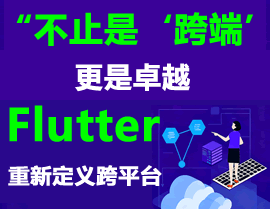uniapp vue3 如何使用renderjs实现高性能渲染
在uniapp的vue3项目中,如何通过renderjs实现高性能渲染?目前遇到列表复杂数据渲染时卡顿明显,求具体实现方案和优化建议。是否需要特殊配置?与常规的vue渲染方式相比有哪些性能优势?希望有实际代码示例说明。
2 回复
在uniapp vue3中使用renderjs实现高性能渲染,主要步骤如下:
- 创建renderjs模块
在vue组件中通过
module属性声明renderjs模块:
<view change:prop="renderjs.update" :prop="data"></view>
- 编写renderjs代码 在methods中定义renderjs模块:
methods: {
renderjs: {
update(newVal, oldVal, ownerInstance, instance) {
// 在这里直接操作DOM
const canvas = instance.$el.querySelector('canvas')
const ctx = canvas.getContext('2d')
// 执行高性能绘图操作
}
}
}
- 适用场景
- 复杂canvas动画
- 大量DOM操作
- 复杂数学计算
- WebGL渲染
- 注意事项
- renderjs运行在单独的JS线程
- 不能直接访问vue数据,需通过prop传递
- 适合CPU密集型任务
- 避免频繁通信影响性能
通过renderjs可将复杂渲染任务分流到独立线程,避免阻塞主线程,显著提升性能。
在 UniApp + Vue3 中使用 RenderJS 实现高性能渲染,主要利用 RenderJS 在视图层直接执行逻辑,减少逻辑层与视图层通信开销。以下是关键步骤和示例:
1. 基本配置
在 vue 文件中添加 renderjs 模块:
<template>
<view>
<canvas
type="2d"
id="myCanvas"
@touchstart="handleTouch"
@touchmove="handleTouch"
:change:prop="renderjs.updateCanvas"
prop="{{canvasData}}"
></canvas>
</view>
</template>
<script module="renderjs" lang="renderjs">
export default {
mounted() {
// 初始化 Canvas 上下文
const canvas = document.getElementById('myCanvas');
this.ctx = canvas.getContext('2d');
},
methods: {
updateCanvas(newProp, oldProp, ownerInstance, instance) {
// 接收到逻辑层数据后直接渲染
this.drawComplexGraphics(newProp);
},
drawComplexGraphics(data) {
// 高性能绘制逻辑(如图表、动画)
this.ctx.clearRect(0, 0, 300, 300);
this.ctx.fillStyle = '#f00';
data.forEach(item => {
this.ctx.fillRect(item.x, item.y, 10, 10);
});
},
handleTouch(event, ownerInstance) {
// 在视图层直接处理交互,避免通信延迟
const touch = event.touches[0];
ownerInstance.callMethod('onTouch', {
x: touch.clientX,
y: touch.clientY
});
}
}
}
</script>
<script setup>
import { ref } from 'vue';
const canvasData = ref([{x: 50, y: 50}]);
const onTouch = (e) => {
// 逻辑层接收处理结果
canvasData.value.push({x: e.x, y: e.y});
};
</script>
2. 性能优化技巧
- 减少通信:复杂计算(如物理引擎、图像处理)直接在 RenderJS 中完成
- 批量更新:使用
ownerInstance.callMethod合并数据传递 - 缓存对象:重复使用的 Canvas 上下文或计算结果进行缓存
3. 适用场景
- 图表绘制(ECharts)
- 复杂动画/游戏
- 图像滤镜处理
- 大量动态元素渲染
注意事项
- RenderJS 仅支持视图层操作(DOM/BOM)
- 需通过
change:prop和callMethod与逻辑层通信 - 避免频繁跨层数据传输
通过合理使用 RenderJS,可显著提升 UniApp 中图形渲染和交互响应的性能。






